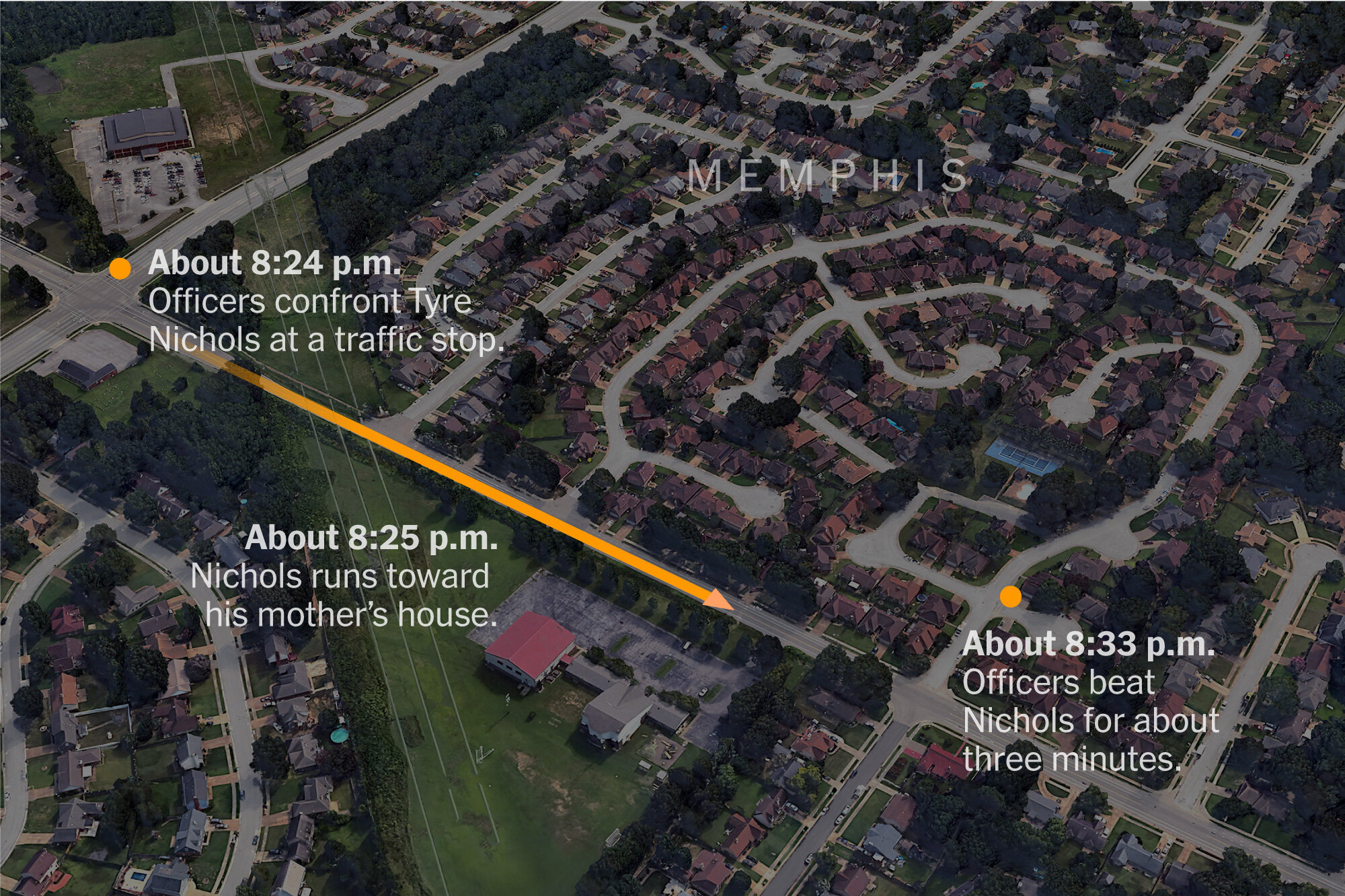On Jan. 10, Tyre Nichols died of injuries sustained during a traffic stop caused by a “confrontation” with five officers of the Memphis Police Department three days prior. The Memphis Police Department released bodycam footage of the encounter on Jan. 27. The videos contain graphic violence.
The aftermath of the case has raised numerous questions and cries for justice.
…
At 29 years old, Nichols had a four-year-old son, a full-time job at FedEx and a passion for skateboarding and photographing sunsets since age six. He moved from Sacramento to Memphis in early 2020.
According to the family’s lawyers, Nichols’ last words may have been the ones heard in the footage: Nichols yelling “Mom! Mom! Mom!” as he was beaten about 100 yards from her house.
…
According to a New York Times timeline of the police encounter, Nichols was pulled over at about 8:24 p.m. on Jan. 7. before fleeing on foot at 8:25 p.m. after the officers began making threats and forcefully pinning him down. Nichols ran towards his mother’s house.
Backup arrived at 8:29 p.m., and at about 8:33 p.m., the officers beat Nichols.
According to the New York Times, “Throughout the struggle, Mr. Nichols appears to have been kicked violently at least twice in the face, beaten three times with a baton, sprayed in the face twice with a chemical and punched in the head six times, all within the span of three minutes.”
Nichols is then handcuffed after being sat and propped against a car, appearing immobile.
At 8:41 p.m., medics arrived, but per the New York Times, roughly 16 minutes passed before first aid was provided.
Nichols was taken to St. Francis Hospital at 9:18 p.m., where he would die three days later.
…
Each of the five Black Memphis Police Department officers who beat Nichols — Tadarrius Bean, Demetrius Haley, Emmitt Martin III, Desmond Mills Jr. and Justin Smith — were fired and charged with one count of second-degree murder, one of aggravated assault, two of aggravated kidnapping, two of official misconduct and one of official oppression.
Memphis’ Mayor Jim Strickland said on Friday all special units of the MPD would be independently reviewed.
However, another investigation is underway regarding the on-site medical treatment of Nichols by the responding emergency medical workers, who appeared to be from the Memphis Fire Department. Fire E.M.T.s are separate from ambulance crews and often have a faster response time. Their role is largely to carry out first aid, i.e. stop bleeding, check breathing, vital signs, etc.
Dr. Sean Montgomery, a trauma expert at Duke University’s medical school, said the medics began assessing Nichols in line with standards about 15 minutes after their arrival, although he noted the video’s low quality complicated evaluating their treatment properly.
Although the medics were not identified, Qwanesha Ward, a spokeswoman for the Memphis Fire Department, said they suspended two of the E.M.T.s who treated Nichols on Friday.
…
Protests have emerged around the country: in Los Angeles, Portland, New York City, Memphis and more. People have held memorials too. Others have taken action online, some calling for justice, others expressing sympathy.
As people across the nation seek to hold police accountable and end the recurrence of events like these, education, conversation and a closer look at what this case reveals about race and policing could prove beneficial.
In the article entitled “Tyre Nichols Beating Opens a Complex Conversation on Race and Policing,” the New York Times notes that all five officers were Black and discusses what this reveals about police brutality and police reform efforts.
James Forman Jr., who has studied and written on race and law enforcement, said, “Blackness doesn’t shield you from all of the forces that make police violence possible. What are the theories of policing and styles of policing, the training that police receive? All of those dynamics that propel violence and brutality are more powerful than the race of the officer.”
Professor Jody Armour, a University of Southern California law professor who studies racial justice, said it is not a Black and white issue, but a Black and blue one.
Benjamin Crump, the Nichols’ family lawyer — who has also represented the families of George Floyd, Breanna Taylor and others – said this case brings a blueprint to the table, a new standard and expectation.
“This is not the first time we saw police officers committing crimes and engaging in excessive, brutal force against Black people in America who are unarmed, but we have never seen swift justice like this,” Crump said. “We now have a blueprint, America, and we won’t accept less going forward in the future. We won’t have Black officers treated differently than white officers. We want equal justice under the law.”












Be First to Comment